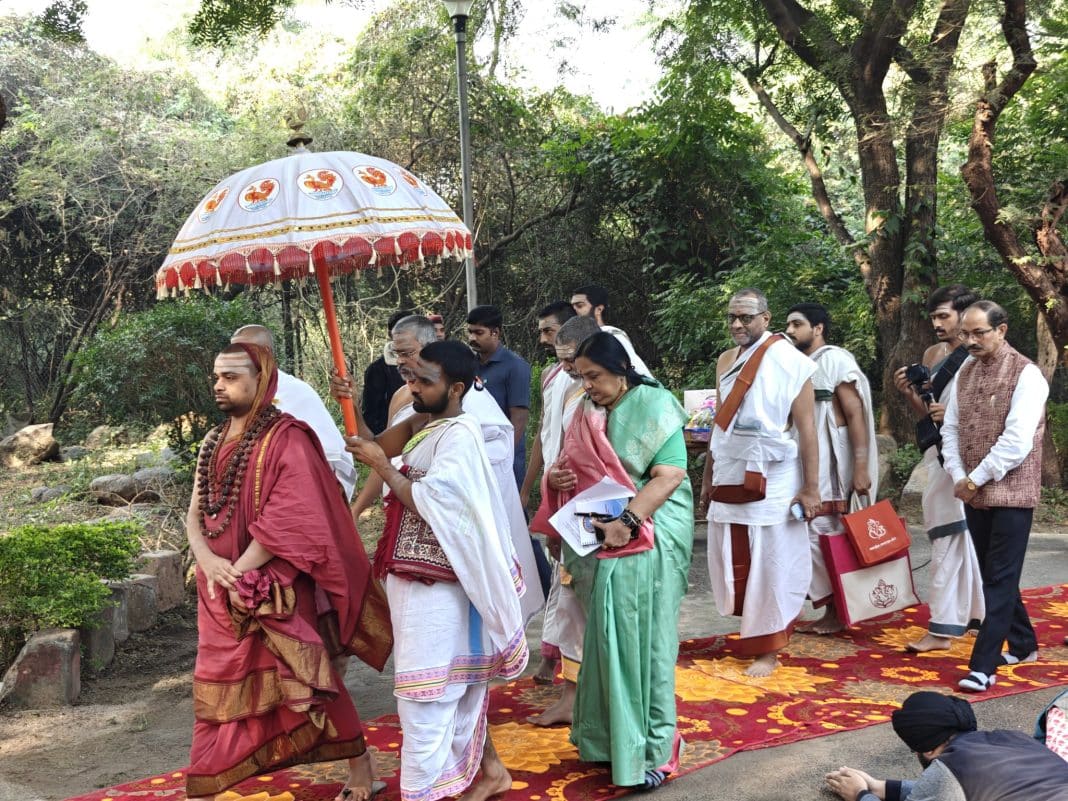Shankaracharya’s Visit Marks a Significant Cultural Moment at JNU
The Jawaharlal Nehru University campus in New Delhi, long regarded as a stronghold of left-oriented ideology, witnessed the arrival of Jagadguru Shankaracharya Swami Vidushekhara Bharati Sannidhanam of Sringeri Sharada Peetham.
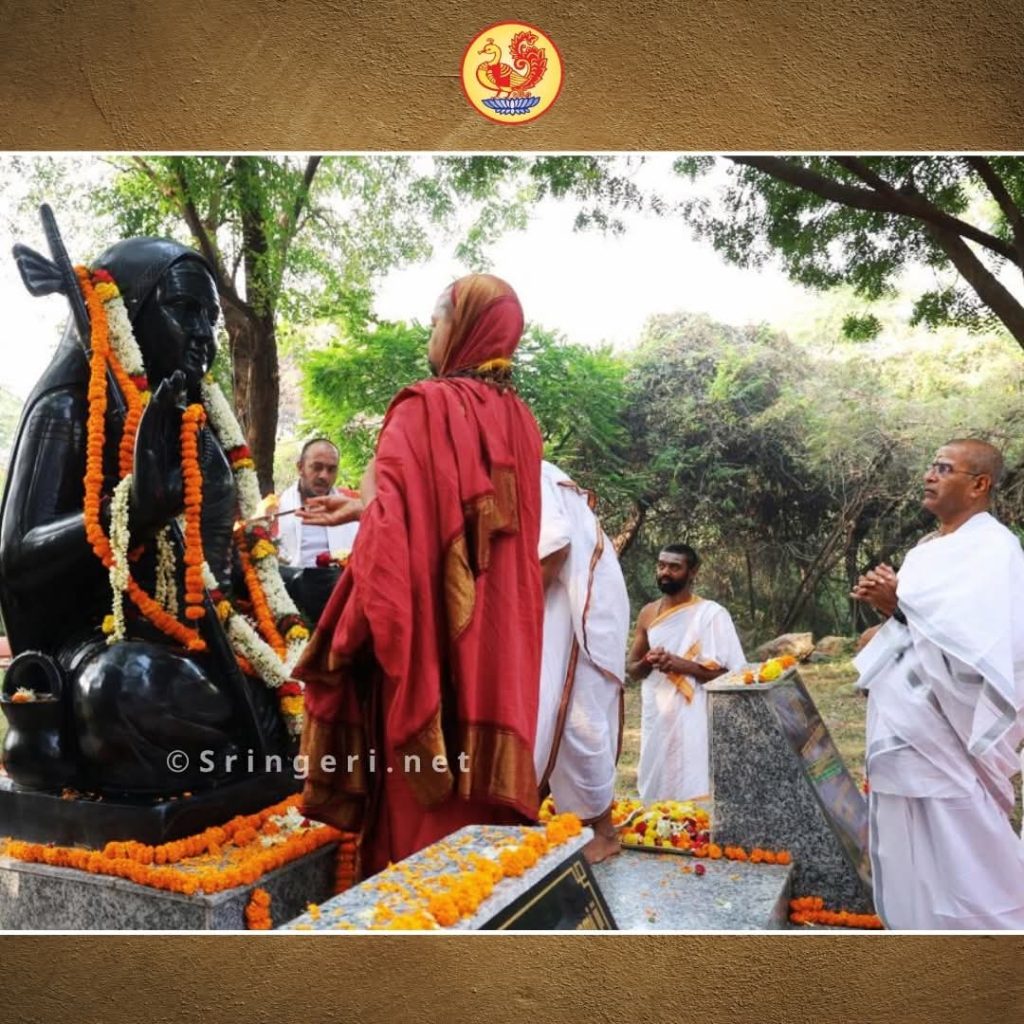
The visit drew wide attention as the Shankaracharya performed a ceremonial garlanding of the statue of Swami Vidyaranya and addressed students on Vedanta.
Event Organized by VIKAS, the Newly Renamed Knowledge Institute
The programme was hosted by the Vidyaranya Institute of Knowledge and Advanced Studies (VIKAS), formerly known as the Jawaharlal Institute of Advanced Studies (JNIAS).
The institution, recently renamed to honour Vidyaranya, focuses on research within the broad spectrum of Indian knowledge systems, including Sanatan Dharma, philosophy, Sanskrit, Tamil, Prakrit, Pali and associated disciplines.
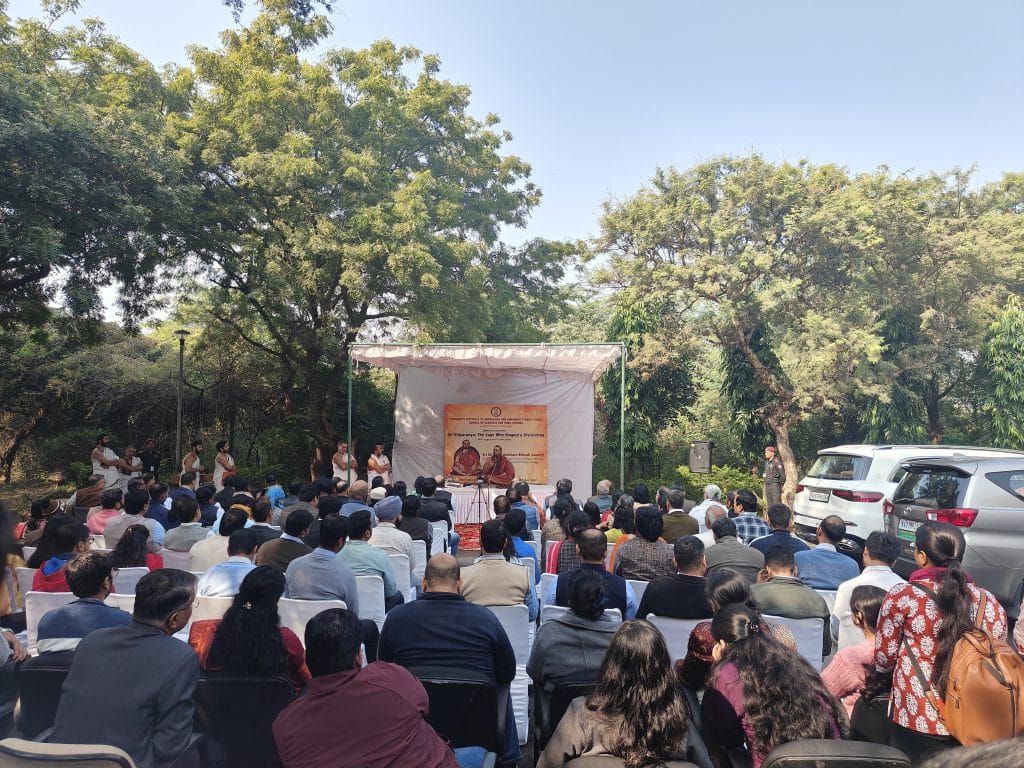
During the event, the Shankaracharya offered floral tribute to Swami Vidyaranya and delivered an extended lecture on Vedantic philosophy.
He explained core Advaita teachings such as “Brahma Satyam, Jagat Mithya” and elaborated on the all-pervasive nature of Brahman.
Shankaracharya Highlights Vidyaranya’s Legacy and the Path of Learning
In his address, the Shankaracharya discussed the life of Swami Vidyaranya, his ascension as the Shankaracharya of Sringeri, and his historic role in the establishment of the Vijayanagara Empire.
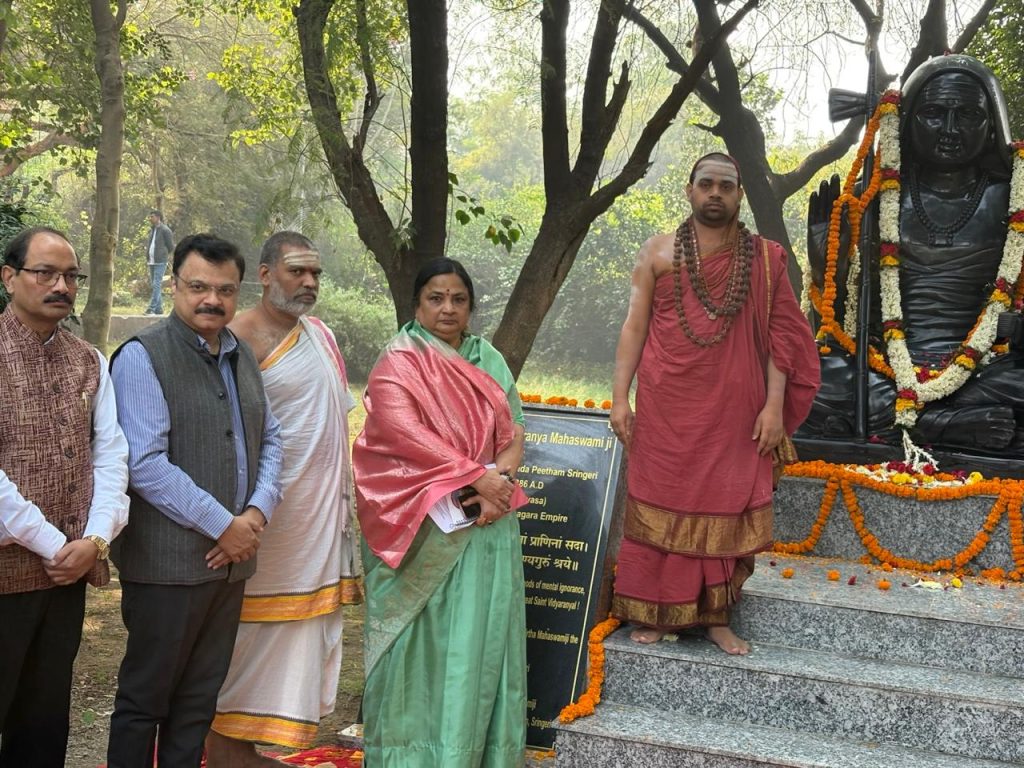
He emphasised a structured approach to learning: first contemplating a text, then practising it, then studying commentaries of earlier Acharyas, and finally engaging in dialogue with peers.
This, he said, ensures deeper absorption of knowledge. Through VIKAS, he added, students would develop in intellect and character, contributing meaningfully to society and the nation.
A Symbolic Moment for a Campus Long Known for Ideological Clashes
The visit also carried symbolic weight. JNU has often been associated with anti-national slogans and divisive campus politics. The current students’ union president, Aditi Mishra, has faced criticism for raising anti-Brahmin slogans.

In this context, the presence of the Shankaracharya and the enthusiastic participation of students offered a contrasting and hopeful image of the campus. JNU Vice-Chancellor Prof. Santishree Dhulipudi Pandit was present at the event.
Who Is Sringeri’s Shankaracharya Swami Vidushekhara Bharati?
Early Life and Vedic Foundation
Jagadguru Shankaracharya Sri Vidushekhara Bharati was born as Sri Kuppa Venkateshwara Prasad Sharma on Nag Panchami, 24 July 1993, in Tirupati, Andhra Pradesh, into a family of Vedic scholars.
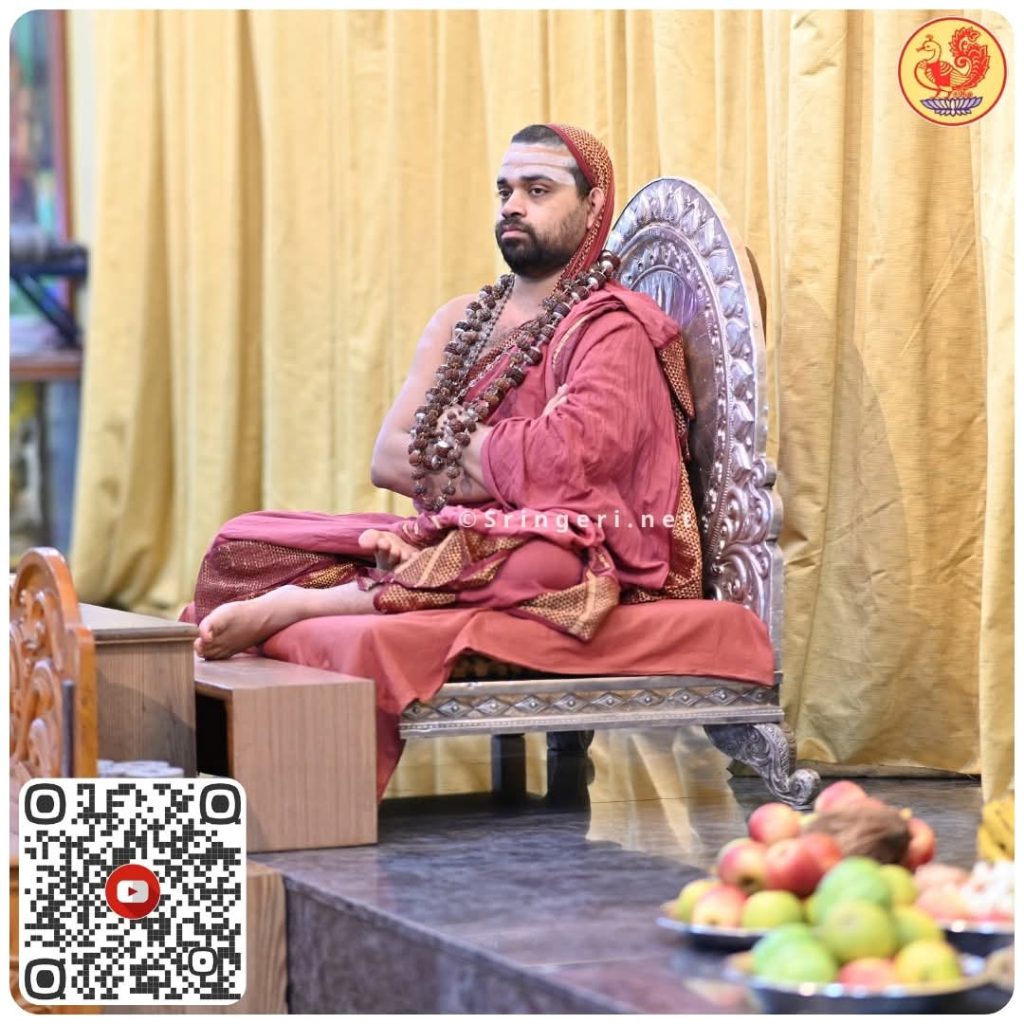
Raised in an environment deeply rooted in devotion and traditional Vedic practice, he received early training in Krishna Yajurveda from his father and grandfather, displaying exceptional aptitude.
Initiation into Sringeri and Rapid Scriptural Mastery
During a visit to Sringeri in early 2009, the young Venkateshwara Prasad sought refuge under Jagadguru Sri Bharati Tirtha Mahasannidhanam, expressing a desire to study the scriptures under him.
Impressed by the boy’s honesty and intelligence, the Jagadguru accepted him as a disciple and personally taught him the shastras.
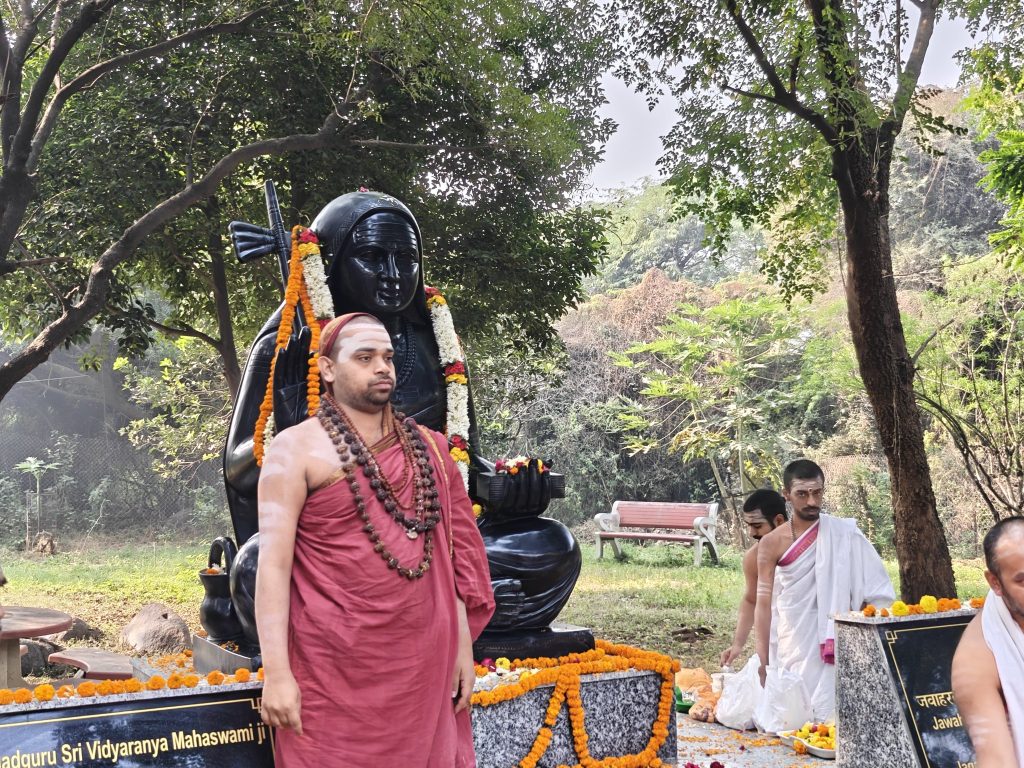
The brahmachari progressed swiftly in his studies. On 23 January 2015, maintaining the unbroken guru-shishya lineage dating back to Adi Shankaracharya, Jagadguru Sri Bharati Tirtha Mahasannidhanam initiated him into Sannyasa, appointed him as successor and bestowed the monastic name “Sri Vidushekhara Bharati.”
Scholarship, Leadership and Service to the Tradition
Trained directly under his guru, Sri Vidushekhara Bharati Sannidhanam has emerged as a distinguished scholar. He now oversees the affairs of the Sringeri Math, undertakes independent tours, blesses devotees and propagates the principles of Sanatan Dharma.
His eloquence in Sanskrit, Kannada, Telugu, Tamil and Hindi is evident in his public discourses. Known for warmth, compassion and clarity of knowledge, he continues to guide devotees along the spiritual path as the successor of the Sringeri lineage.



